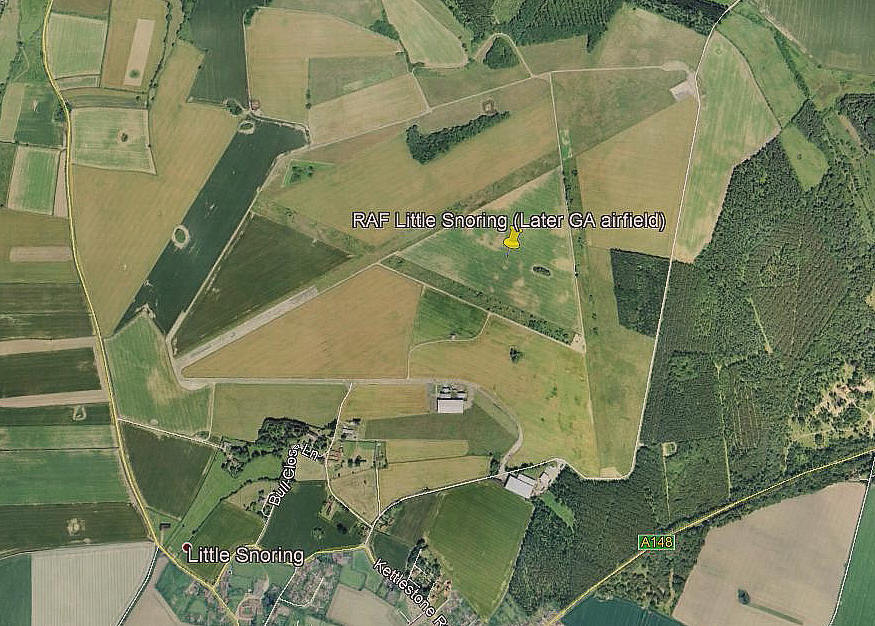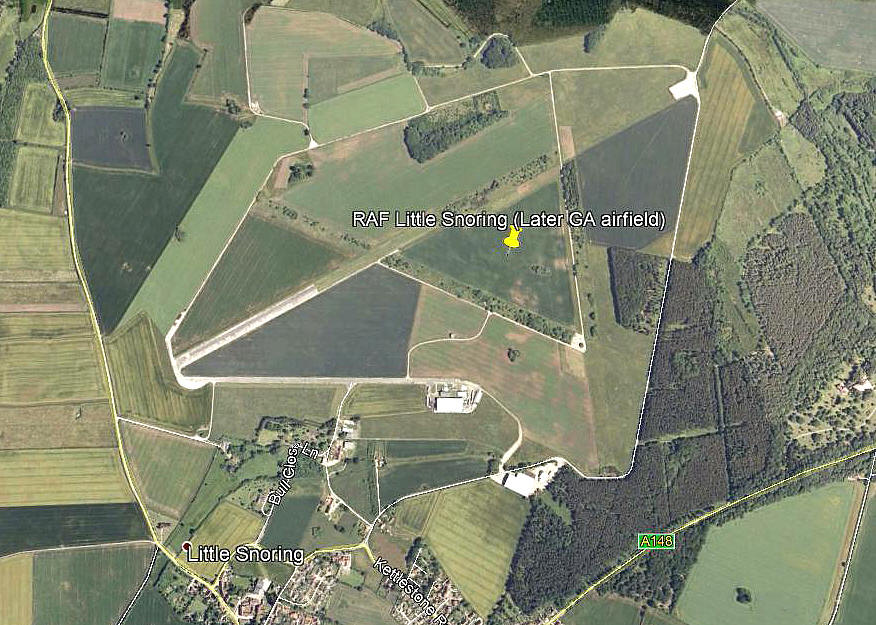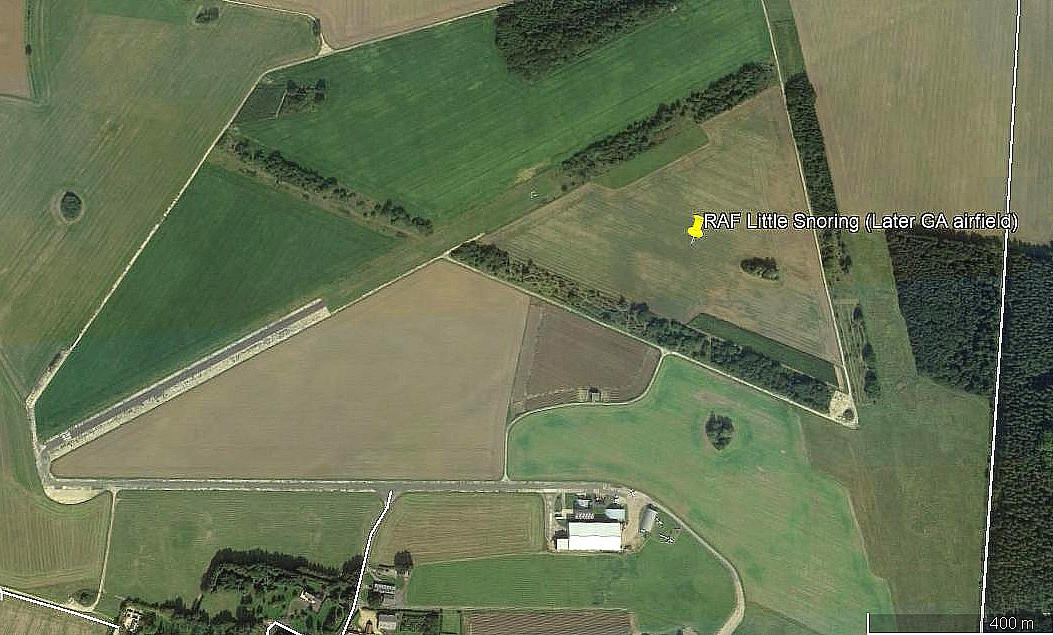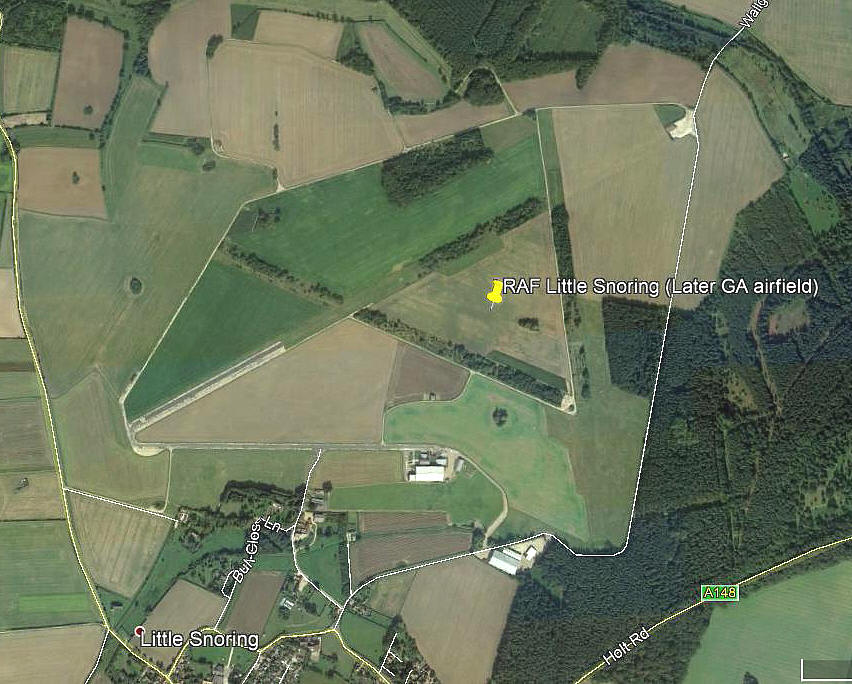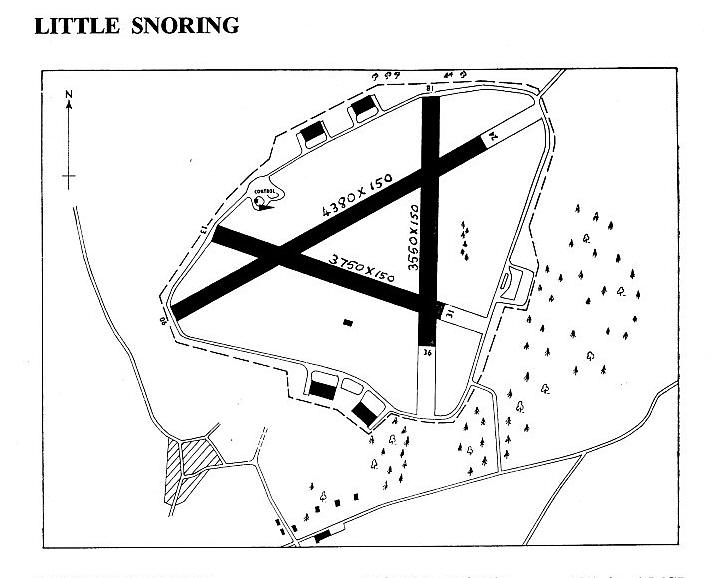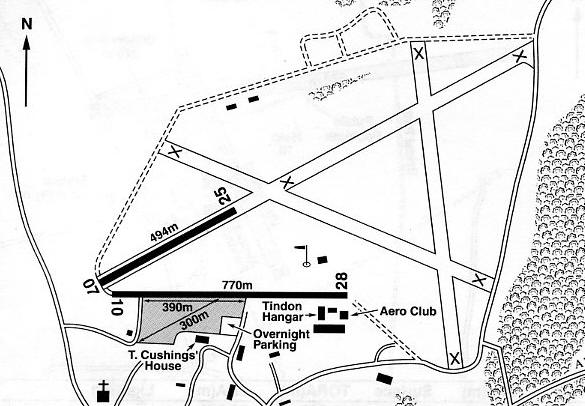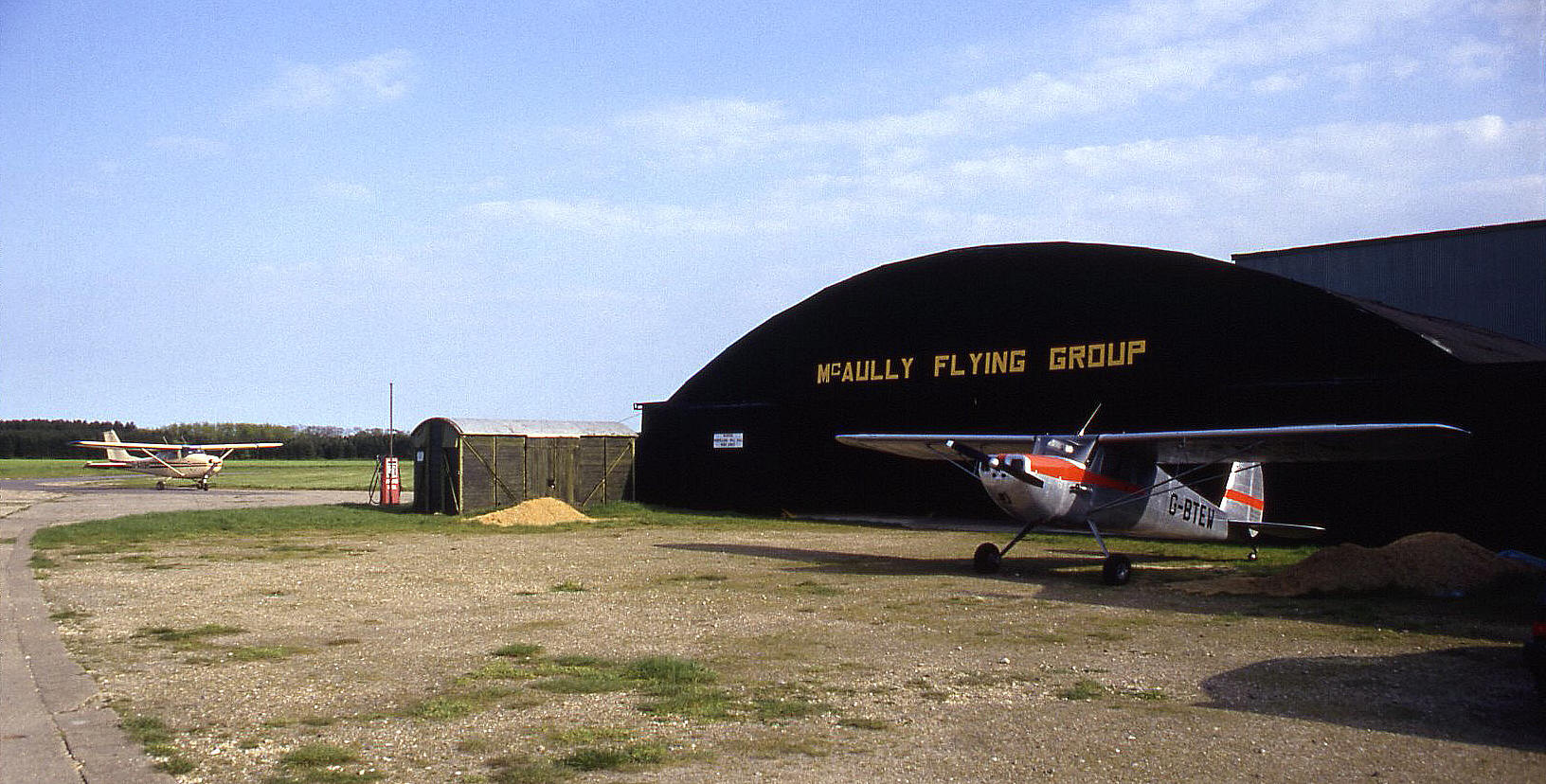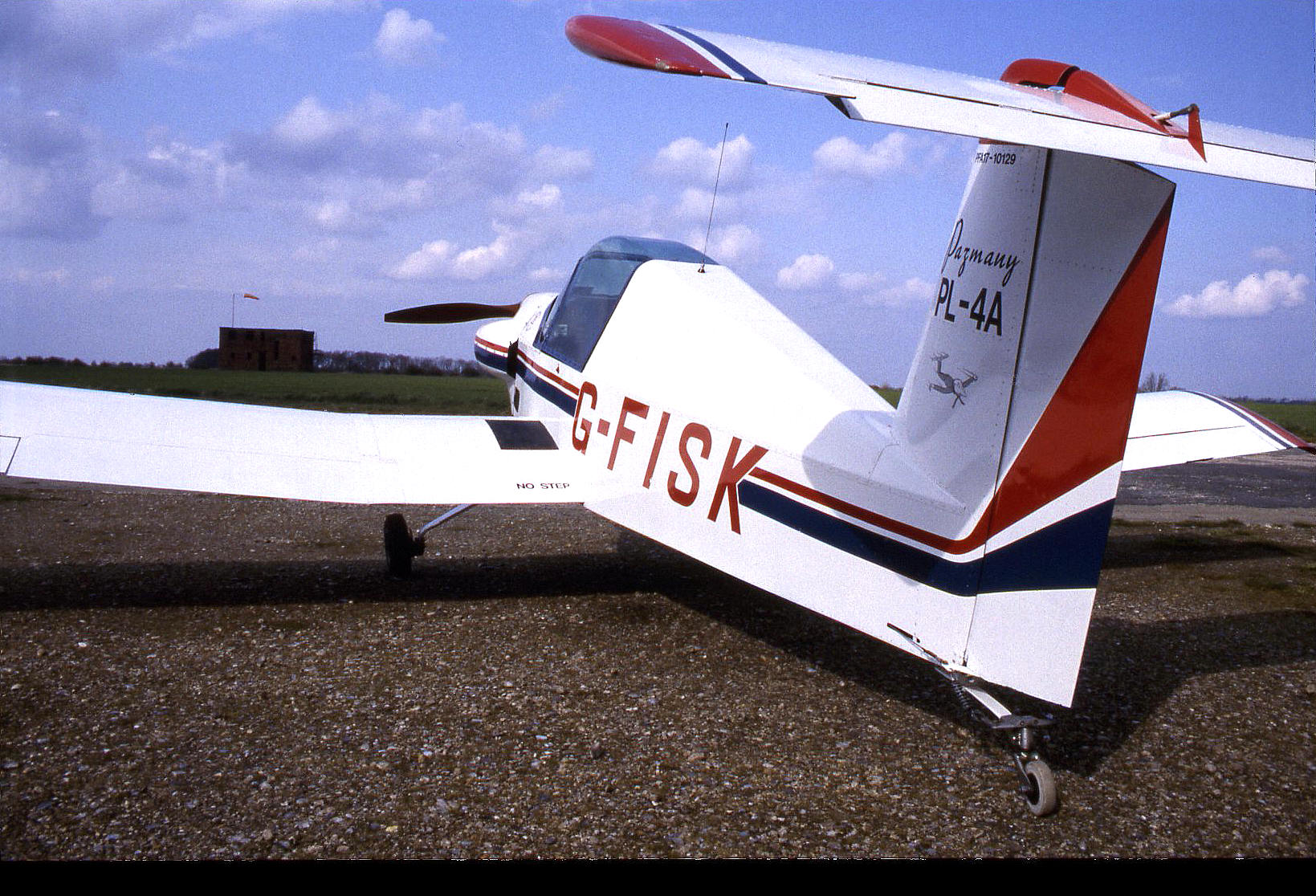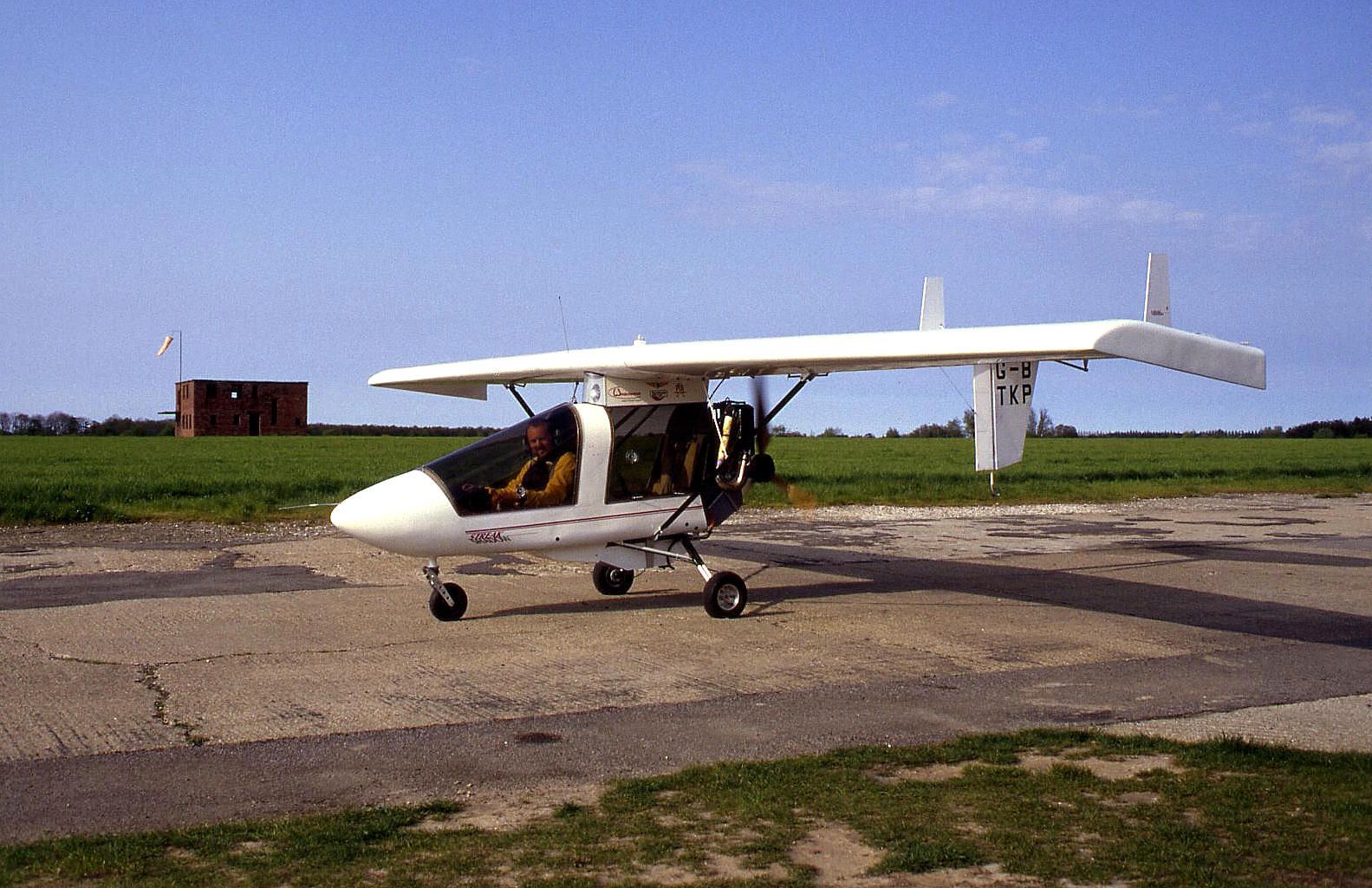Little Snoring
LITTLE SNORING: Military aerodrome later civil private airfield
Note: These four pictures were obtained from Google Earth ©
Military users: WW2: RAF Bomber Command
115 Sqdn & 1678 HCF (Avro Lancasters)
100 (Special Duties) Group 1
69 Sqdn (Bristol Beaufighters then DH Mosquitos)
1692 Bomber Support Training Flight (Boulton-Paul Defiants & Beaufighters)
23 & 141 Sqdns (Mosquitos)
515 Sqdn (Beaufighters then Mosquitos)
In 1953 became a USAF storage base, closing in June 1963
Operated by: 1960 to 2000s: McAully Flying Group
Flying club/school: 1960 to - McAully Flying Group
1959 ‘snapshot’. Fakenham Flying Group
Manufacturing: (From 2007?) The Light Aircraft Company
Location: 1nm N of A148, NE of Little Snoring, SE of Great Snoring & SW of Thursford Green, 3nm NE of Fakenham
Period of operation: Military 1943 to 1952. Later civil (1970s) to present day?
Note: These maps are reproduced with the kind permission of Pooleys Flight Equipment Ltd. Copyright Robert Pooley 2014.
Runways:
WW2: 07/25 1829x46 hard 13/31 1280x46 hard 01/19 1280x46 hard
1965: 06/24 1335x46 hard 13/31 1143x46 hard 18/36 1082x46 hard
1990/2000: 10/28 770x16 hard (used to be a taxyway) 07/25 494x23 hard
This Pooleys map also shows a 'tight' grass landing area, with a roughly 07/25 landing run of 300 metres and a roughly 10/28 run of 390 metres, situated just to the south of the hard runways. Ideal for Cubs and most microlights of course.
NOTES: It took eleven months to construct and build this airfield, opening in July 1943 as a satellite for FOULSHAM. 1678 Heavy Conversion Flight had a few Lancaster B.IIs and 115 Sqdn twenty four Lancaster B.IIs. The Lancaster B.II was powered by Bristol Hercules radials rather than Merlins. In the manner of the day, (the reasons for this strategy still eludes me), the RAF saw fit to move squadrons around the country in an almost manic manner.
Having arrived in August 1943 1678 HCF were moved to FOULSHAM in September 1943. Why? 115 Sqdn only stayed until November. The history after January 1944 becomes very complicated, hardly suitable for a brief listing such as this - but well worth looking into I’d say. But here below are a couple of examples.
23 & 515 SQUADRONS
23 Sqdn arrived from Malta in June 1944 flying Mosquito FB.VI types. In early August 1944 both 23 and 515 Sqdns undertook daylight escort duties over Europe. In December that year several of both squadrons Mosqitos were modified to carry ASH, the American A.1 Mk XV radar. These aircraft had their guns removed and a small ‘thimble’ radome fitted on the nose.
It is worth mentioning that amost from the start of WW2, (after being formed at NORTHOLT in LONDON), 515 Squadron specialised in ECM (Electronic Countermeasures), and may well have been the first RAF squadron to be so equipped (?).
ANOTHER ERA
From September until December 1945 LITTLE SNORING closed down. Then becoming, in December, 112 Sub-Storage site of 274 Maintenance Unit with it’s HQ at SWANNINGTON. Their main task being long-term storage of large numbers of surplus Mosquito types. During 1947 and 1948 test pilots were flown in from WATERBEACH in Avro Ansons and Airspeed Oxfords to evaluate many examples before delivery to the Fleet Air Arm and various foreign Air Forces.
No.2 CAACU
The No.2 Civilian Anti-Aircraft Co-operation Unit was formed here in May 1951, using Bristol Beaufighter TT-10s and Vickers-Supermarine Spitfire LF.16e types as target tugs. In late August some ex 34 Sqdn Spitfires were delivered here to 2 CAACU. It appears the Spitfires continued to fly from here but due to the poor state of the runways the Beaufighters transferred to CAMBRIDGE. The Unit moving to LANGHAM in May/June 1952.
THE McAULLY FLYING GROUP
The McAully Flying Group was established in about 1960 in memory of a Fakenham Flying Group member killed in a flying accident.
It was reported that in 1977 five aircraft were based here: Piper PA-18 Super Cub 95 G-ARAO and Piper L-4B Cub G-BBUU, both of the McAully Flying Group, plus the Druine D.62B Condor C-AYFH, DH.82A Tiger Moth G-AYVY (PG617) and the DHC.1Chipmunk 22 G-BCXN.
Another report says that in 1978 the McAully Flying Group had nine aircraft, including;. The Piper Cub G-BBUU which replaced the Cub G-AKAA, DH.82A Tiger Moth G-ANFI, Chipmunk G-BCXN, Morane-Saulnier Rallye G-ASAV and Piper PA-18 Super Cubs G-ARAO and G-AYPP.
COMPETITIONS & AIRSHOWS
An annual aerobatic competition was started in the late 1970s and I believe this still takes place? Also air shows have been held here – for example in 1978 the airshow featured the Sea Fury of the Fleet Air Arm Historic Flight, B.17 Fortress “Sally B” then based at DUXFORD, (both the latter might have landed?), the Arrow Active II from REDHILL and a Bloodhound missile from 85 Sqdn WEST RAYNHAM - presumably not flown? (Sorry, it's a joke)
In 1983 the runways were broken up leaving what remains today. The McAully Flying Group moved to the south side of the airfield where they remain to this day.
PERSONAL MEMORIES
My first visit, (mainly to put the lovely name of LITTLE SNORING into my log book), was with a well loaded, (four PoB), PA-28 Archer (G-BEXW) in April 1993 having my wife and her mother and husband on board. Landing on 07/25 wasn’t a problem but due to the weight a take-off on this runway was marginal; so I elected to take-off on the old taxiway/peri- track 10/28. In those days one half of this ‘runway’ was pretty rough so in effect it was 770 metres long by about 8 metres wide. A novel experience.
A month later I was flying in with my good pilot friend Guy Browning from TOP FARM in the Cessna 172 G-AXBH during May 1993. We had landed at GREAT MASSINGHAM, also a first visit before going on to LITTLE SNORING. On the way back we landed, again for the first time, at GREAT THORNES FARM. In those days doing flights such as these were a bit of an adventure, which we much enjoyed.
We'd love to hear from you, so please scroll down to leave a comment!
Leave a comment ...
Copyright (c) UK Airfield Guide















